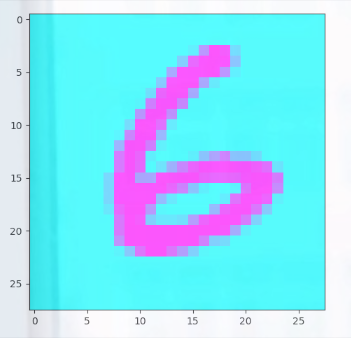import tensorflow as tf
import matplotlib.pyplot as plt
from tensorflow.examples.tutorials.mnist import input_data #数据集
# 读取数据
mnist = input_data.read_data_sets('MNIST.data',one_hot=True)
# 站位
x = tf.placeholder(tf.float32,[None,784])
y = tf.placeholder(tf.float32,[None,10])
# model 五层
w1 = tf.get_variable('w1',shape=[784,512],initializer=tf.contrib.layers.xavier_initializer())
b1 = tf.Variable(tf.random_normal([512]))
a1 = tf.nn.relu(tf.matmul(x,w1) + b1)
w2 = tf.get_variable('w2',shape=[512,512],initializer=tf.contrib.layers.xavier_initializer())
b2 = tf.Variable(tf.random_normal([512]))
a2 = tf.nn.relu(tf.matmul(a1,w2) + b2)
w3 = tf.get_variable('w3',shape=[512,512],initializer=tf.contrib.layers.xavier_initializer())
b3 = tf.Variable(tf.random_normal([512]))
a3 = tf.nn.relu(tf.matmul(a2,w3) + b3)
w4 = tf.get_variable('w4',shape=[512,512],initializer=tf.contrib.layers.xavier_initializer())
b4 = tf.Variable(tf.random_normal([512]))
a4 = tf.nn.relu(tf.matmul(a3,w4) + b4)
w5 = tf.get_variable('w5',shape=[512,10],initializer=tf.contrib.layers.xavier_initializer())
b5 = tf.Variable(tf.random_normal([10]))
a5 = tf.nn.softmax(tf.matmul(a4,w5) + b5)
# 代价
cost = -tf.reduce_mean(tf.reduce_sum(y*tf.log(a5),axis=1))
cost_history = []
# 优化器
optimizer = tf.train.AdamOptimizer(learning_rate=0.0005).minimize(cost)
# 开启会话
sess = tf.Session()
sess.run(tf.global_variables_initializer())
# 周期
training = 15
# 批次
batch_size = 100
# 迭代更新参数
for i in range(training):
avg_cost = 0
batch = int(mnist.train.num_examples/batch_size) #每批次次数
for k in range(batch):
# 训练集 特征和标签
batch_x,batch_y = mnist.train.next_batch(batch_size)
c,_ = sess.run([cost,optimizer],feed_dict={x:batch_x,y:batch_y})
avg_cost += c/batch
print(i,c)
cost_history.append(avg_cost)
# 画图 代价曲线
plt.plot(cost_history)
plt.show()
# 准确率
accuracy = tf.reduce_mean(tf.cast(tf.equal(tf.argmax(a5,1),tf.argmax(y,1)),tf.float32))
print(sess.run(accuracy,feed_dict={x:mnist.test.images,y:mnist.test.labels}))
import random
#随机个图片
r = random.randint(0,mnist.test.num_examples-1)
# 标签图片下标
print(sess.run(tf.argmax(mnist.test.labels[r:r+1],1)))
# 预测图片下标
print(sess.run(tf.argmax(a5,1),feed_dict={x:mnist.test.images[r:r+1]}))
# 展示图片
plt.imshow(mnist.test.images[r:r+1].reshape(28,28),cmap='cool')
plt.show()
0 0.28348652
1 0.03937961
2 0.01301315
3 0.10233385
4 0.05613676
5 0.028325982
6 0.07927568
7 0.046484355
8 0.0050286734
9 0.024036586
10 0.012736168
11 0.016650086
12 0.007918741
13 0.013027511
14 0.0048584314
0.9807
[6]
[6]


最后
以上就是爱听歌大炮最近收集整理的关于深度学习之BP算法③——手写数字底层五层隐藏层(TensorFlow)的全部内容,更多相关深度学习之BP算法③——手写数字底层五层隐藏层(TensorFlow)内容请搜索靠谱客的其他文章。
本图文内容来源于网友提供,作为学习参考使用,或来自网络收集整理,版权属于原作者所有。








发表评论 取消回复